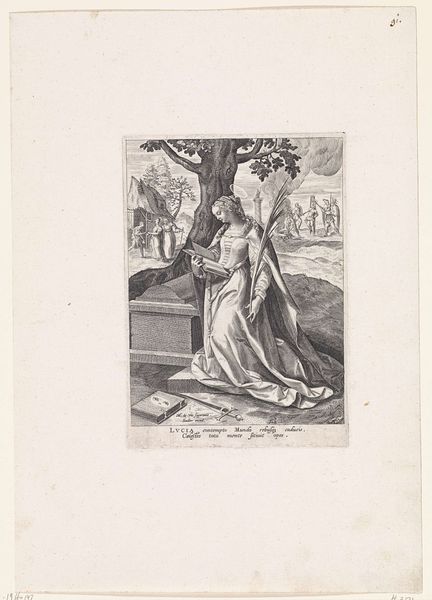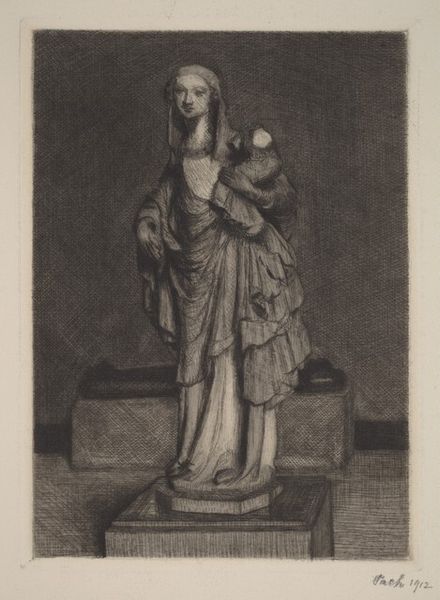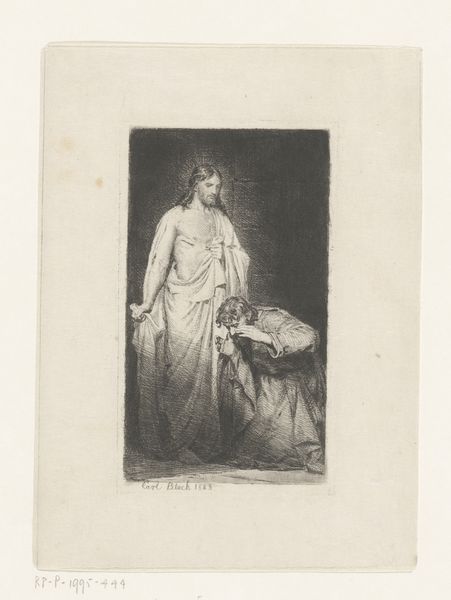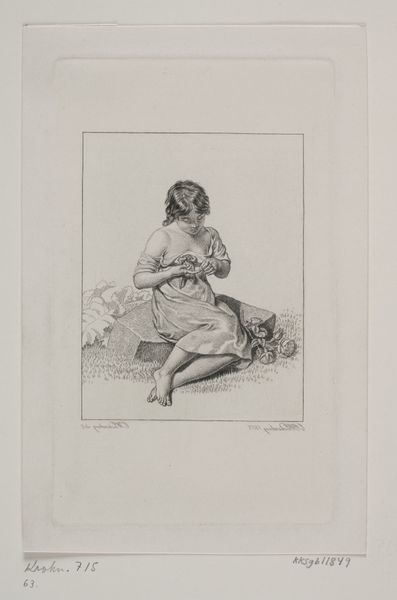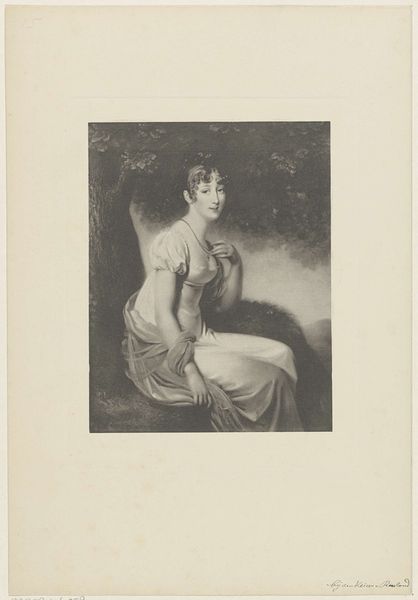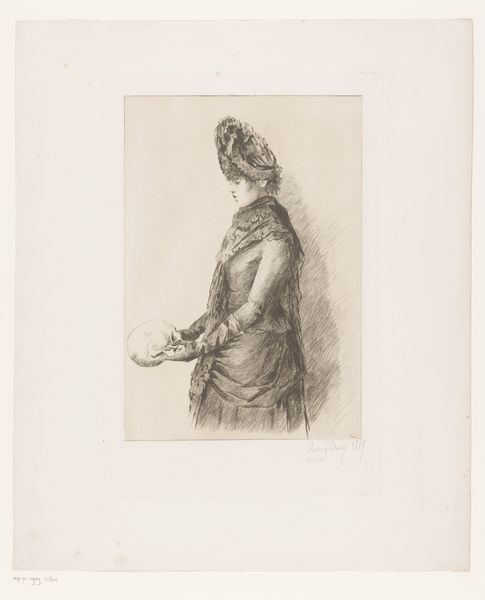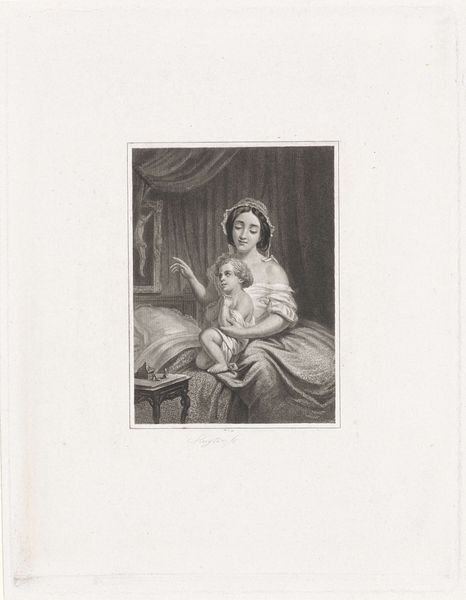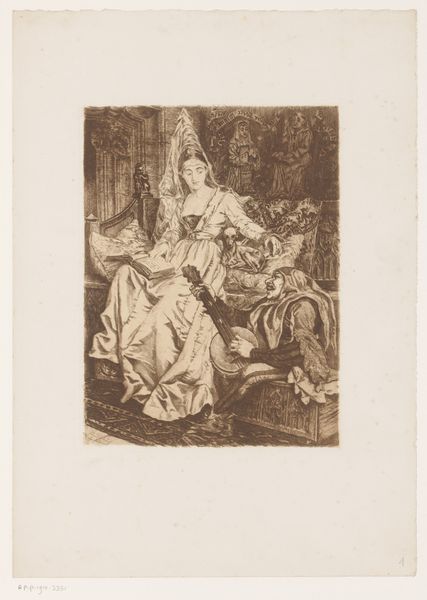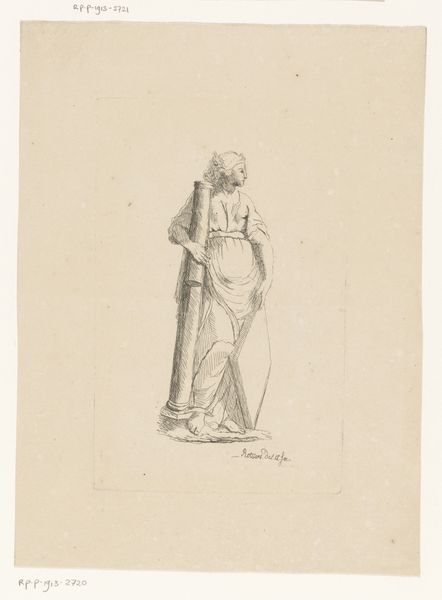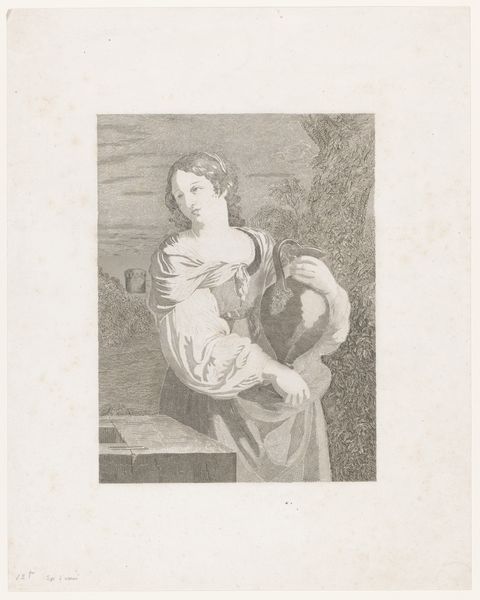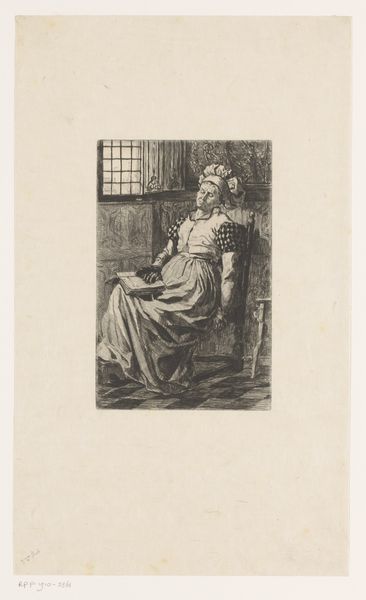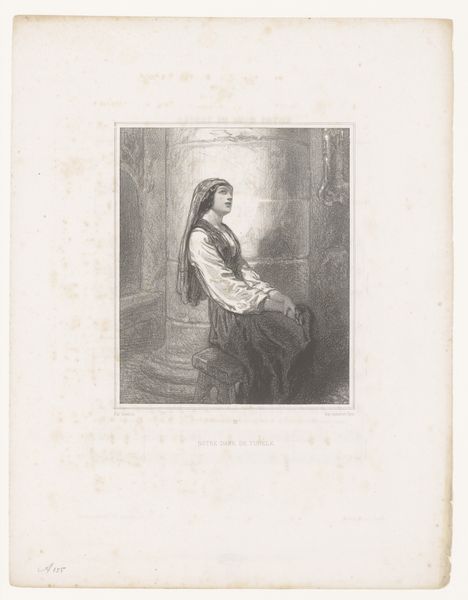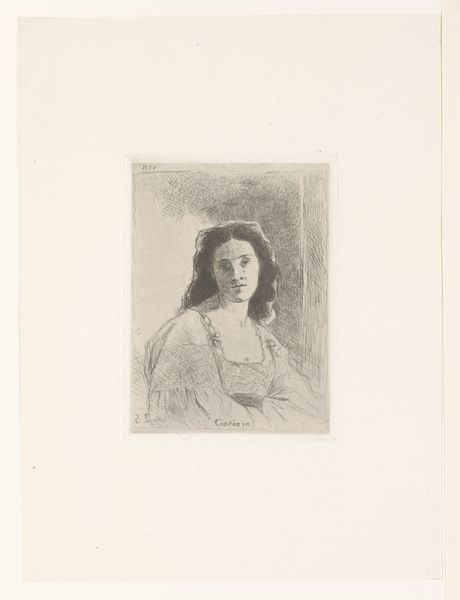
print, etching
#
portrait
#
narrative-art
# print
#
etching
#
landscape
#
figuration
Dimensions: height 101 mm, width 68 mm
Copyright: Rijks Museum: Open Domain
Editor: This etching, "Landschap met vrouw," made sometime between 1841 and 1887 by Anna Cécile Nahuys, features a woman in a landscape. It has a kind of somber feel. I'm curious, looking at it from your perspective, what strikes you most about this print? Curator: Well, for me, it's the way Nahuys employs etching to create a layered sense of production, almost a tension between industrial reproduction and intimate craft. Note the depiction of the woman, seemingly weighed down by unseen forces, while cherubs loom overhead. Editor: Yes, she does seem burdened. What unseen forces are you referring to? Curator: Think about the process of etching itself, the labor involved in the acid, the lines etched on the plate, and then the pressing. The woman's apparent weariness is a visual manifestation of the larger forces at play – the physical demands inherent in both artmaking and the expectations placed on women in society. Those cherubs...are they heavenly figures or more symbolic of omnipresent judgement? Editor: That’s interesting; the repetitive nature of etching, reflecting potentially repetitive and tedious work, perhaps? What does that then tell us about who might have purchased a print like this at that time? Curator: Precisely! It prompts questions about the consumption of art, particularly landscapes, and their connection to labor. Was this print acquired to ennoble, perhaps obscure, a patron's exploitative economic practices by celebrating a constructed natural setting? Consider the societal context and economic underpinnings of its production and distribution. It also speaks to issues surrounding gendered labor in art and its impact. Editor: So, viewing it this way shifts it from just a pretty landscape to something with much deeper social commentary? Curator: Exactly! It transforms our understanding. It is no longer only about what the artwork depicts but about the social relations involved in its making and viewing. Editor: That gives me so much to think about regarding art’s relationship with labor and how to view art with these new lenses. Thanks so much!
Comments
No comments
Be the first to comment and join the conversation on the ultimate creative platform.
